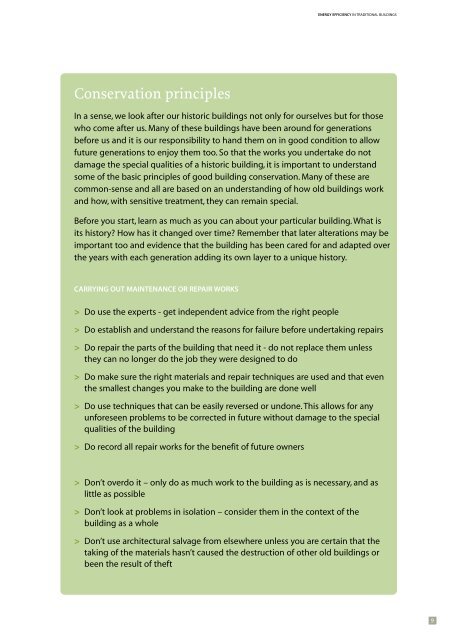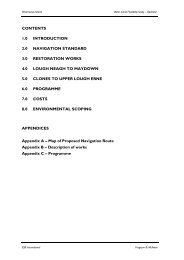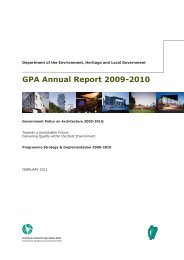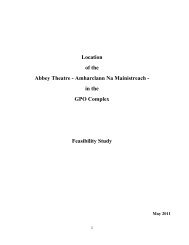Energy Efficiency in Traditional Buildings - Dublin City Council
Energy Efficiency in Traditional Buildings - Dublin City Council
Energy Efficiency in Traditional Buildings - Dublin City Council
Create successful ePaper yourself
Turn your PDF publications into a flip-book with our unique Google optimized e-Paper software.
ENERGY EFFICIENCY IN TRADITIONAL BUILDINGS<br />
Conservation pr<strong>in</strong>ciples<br />
In a sense, we look after our historic build<strong>in</strong>gs not only for ourselves but for those<br />
who come after us. Many of these build<strong>in</strong>gs have been around for generations<br />
before us and it is our responsibility to hand them on <strong>in</strong> good condition to allow<br />
future generations to enjoy them too. So that the works you undertake do not<br />
damage the special qualities of a historic build<strong>in</strong>g, it is important to understand<br />
some of the basic pr<strong>in</strong>ciples of good build<strong>in</strong>g conservation. Many of these are<br />
common-sense and all are based on an understand<strong>in</strong>g of how old build<strong>in</strong>gs work<br />
and how, with sensitive treatment, they can rema<strong>in</strong> special.<br />
Before you start, learn as much as you can about your particular build<strong>in</strong>g. What is<br />
its history How has it changed over time Remember that later alterations may be<br />
important too and evidence that the build<strong>in</strong>g has been cared for and adapted over<br />
the years with each generation add<strong>in</strong>g its own layer to a unique history.<br />
CARRYING OUT MAINTENANCE OR REPAIR WORKS<br />
> Do use the experts - get <strong>in</strong>dependent advice from the right people<br />
> Do establish and understand the reasons for failure before undertak<strong>in</strong>g repairs<br />
> Do repair the parts of the build<strong>in</strong>g that need it - do not replace them unless<br />
they can no longer do the job they were designed to do<br />
> Do make sure the right materials and repair techniques are used and that even<br />
the smallest changes you make to the build<strong>in</strong>g are done well<br />
> Do use techniques that can be easily reversed or undone. This allows for any<br />
unforeseen problems to be corrected <strong>in</strong> future without damage to the special<br />
qualities of the build<strong>in</strong>g<br />
> Do record all repair works for the benefit of future owners<br />
> Don’t overdo it – only do as much work to the build<strong>in</strong>g as is necessary, and as<br />
little as possible<br />
> Don’t look at problems <strong>in</strong> isolation – consider them <strong>in</strong> the context of the<br />
build<strong>in</strong>g as a whole<br />
> Don’t use architectural salvage from elsewhere unless you are certa<strong>in</strong> that the<br />
tak<strong>in</strong>g of the materials hasn’t caused the destruction of other old build<strong>in</strong>gs or<br />
been the result of theft<br />
9

















